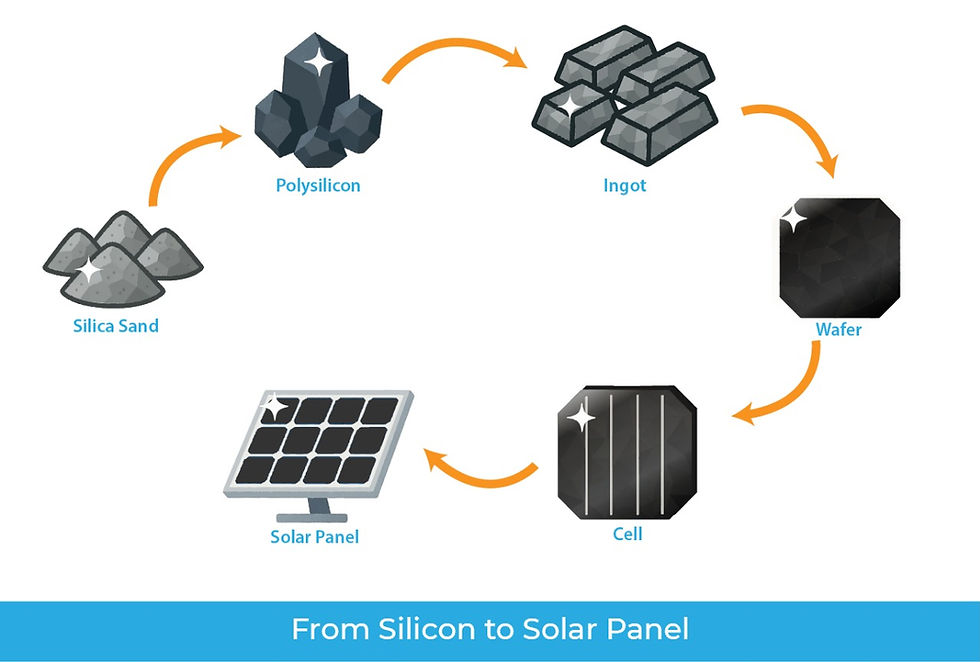How does a Solar PV Cell generate current?
- Hyde Source

- Apr 2, 2020
- 1 min read
Updated: Jul 30

N-Type Silicon Layer:
The TOP LAYER contains silicon and small traces of a material like Phosphorous, that has more electrons than silicon. This gives the top layer, an excess of electrons that are free to move.
This layer is the n-type layer.
P-Type Silicon Layer:
The BOTTOM LAYER contains silicon and an element such as Boron that has fewer electrons than silicon. This gives the bottom layer fewer electrons that are free to move. The missing electrons create a net positive charge.
This layer is called a p-type layer.
Front and Back Contacts:
The Front electrode/contact, typically made of Silver, is printed on top of the n-type layer.
And the p-type layer rests on an Aluminium Back contact.
Working:
When photons strike the solar cell, the energy from the photon knocks off an electron from the silicon atom, setting the electron loose and leaving an area of positive charge(holes) where the electrons used to be.
The loose electrons then move towards the top n-type layer, which readily accepts electrons. Similarly, the loose holes move towards the bottom p-type layer, which accepts the hole.
A conducting wire connects the negative electrode, the load, and the positive electrode in series to form a circuit.
As a result, an electric current is generated to supply the external load.
This is how the PV effect works in a solar cell.
Don't wait to embrace solar savings! Contact us right away so we can understand your unique energy needs and design a customized solar solution perfect for your home or business. Let's power a cleaner, greener and better future together!




